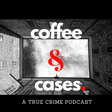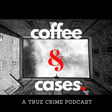
E270: The Martin Family
On December 7, 1958, the Martin family of Portland, Oregon—Kenneth, Barbara, and their three daughters—set off for a Sunday drive to gather Christmas greenery. They were never seen alive again. What began as a cheerful holiday tradition ended in one of the most baffling disappearances in Oregon history. Was it a tragic accident on the winding roads of the Columbia River Gorge? Or was something far more sinister at play—something involving suspicious sightings, ex-convicts, and a stolen gun? Decades later, new discoveries raise even more questions. What really happened to the Martins—and why did the river keep their secrets for so long?
For additional information about this case, make sure to read J.B. Fisher’s book Echo of Distant Water, available HERE.
If you are interested in bonus content for our show or in getting some Coffee and Cases swag, please consider joining Patreon. There are various levels to fit your needs, all of which can be found here: https://www.patreon.com/coffeeandcases

